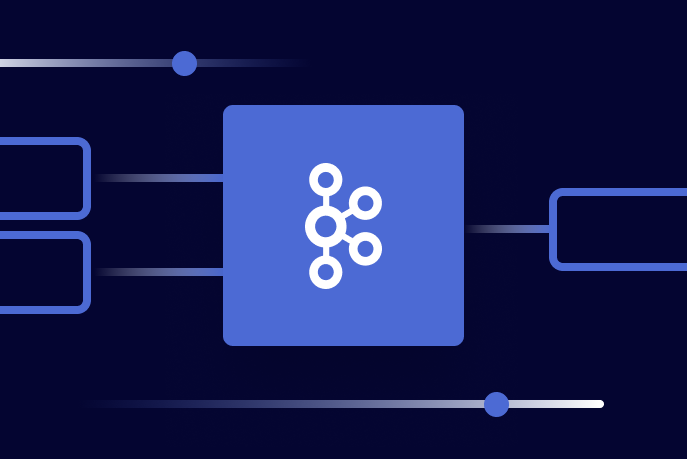Kafka in the Cloud: Why it’s 10x better with Confluent | Find out more
Apache Kafka
Data Products, Data Contracts, and Change Data Capture
Change data capture is a popular method to connect database tables to data streams, but it comes with drawbacks. The next evolution of the CDC pattern, first-class data products, provide resilient pipelines that support both real-time and batch processing while isolating upstream systems...
Unlock Cost Savings with Freight Clusters–Now in General Availability
Confluent Cloud Freight clusters are now Generally Available on AWS. In this blog, learn how Freight clusters can save you up to 90% at GBps+ scale.
Contributing to Apache Kafka®: How to Write a KIP
Learn how to contribute to open source Apache Kafka by writing Kafka Improvement Proposals (KIPs) that solve problems and add features! Read on for real examples.
Is Apache Kafka a Database? With ksqlDB, Most Definitely
Using Apache Kafka to decouple microservices is a successful way to build a more resilient, flexible, and scalable architecture. However, it is very common for such microservices to pair with a database. This blog provides a real-world use case on how Kafka replaces a database with ksqlDB.
Dynamic vs. Static Consumer Membership in Apache Kafka
This article summarizes dynamic versus static consumer group membership in Apache Kafka. It shows how the approaches affect rebalancing in heavy state applications and teaches the user how to choose between the methods.
Apache Kafka Beyond the Basics: Windowing
Learn what windowing is in Kafka Streams and get comfortable with the differences between the main types.
What’s New in Apache Kafka 3.4
Apache Kafka 3.4 includes early access to ZooKeeper to KRaft migrations, enabling existing Kafka clusters to migrate to KRaft mode and gain scalability and resiliency benefits. Additionally, 3.4 includes several updates to Kafka Core, Streams, Connect, and more.
What Are Apache Kafka Consumer Group IDs?
Learn what a Kafka consumer group ID is and how assigning one to Kafka consumers during configuration helps with detecting new data, work sharing, and data recovery.
Diagnose and Debug Apache Kafka Issues: Understanding Increased Connections
If you’ve used Kafka for any amount of time you’ve likely heard about connections; the most common place that they come up is in regard to clients. Sure, producer and consumer clients connect to the cluster to do their jobs, but it doesn’t stop there. Nearly all interactions across a cluster...
Write What You Know: Turning Your Apache Kafka® Knowledge into a Technical Talk
The call for papers for Kafka Summit London 2023 has opened, and we’re looking to hear about your experiences using and working with Kafka. Every great technical talk starts with an experience. If you’re stuck looking for ideas on what to talk about, write what you know...
Diagnose and Debug Apache Kafka Issues: Understanding Increased Consumer Rebalance Time
Rebalancing comes into play in Apache Kafka® when consumers join or leave a consumer group. In either case, there is a different number of consumers over which to distribute the partitions from the topic(s), and, so, they must be redistributed and rebalanced....
Diagnose and Debug Apache Kafka Issues: Understanding Increased Request Rate, Response Time, and/or Broker Load
It can be easy to go about life without thinking about them, but requests are an important part of Apache Kafka; they form the basis of how clients interact with data as it moves into and out of Kafka topics, and, in certain cases, too many requests can have a negative impact on your brokers...
Learn How to Secure Your Apache Kafka Cluster Automatically
This blog post explores the need to implement security for your Apache Kafka® cluster, then briefly reviews the security features and advantages of using Confluent Cloud.
Diagnose and Debug Apache Kafka Issues: Understanding Reduced Message Throughput
When you encounter a problem with Apache Kafka®—for example, an exploding number of connections to your brokers or perhaps some wonky record batching—it’s easy to consider these issues as something to be solved in and of themselves...
Motion in Motion: Building an End-to-End Motion Detection and Alerting System with Apache Kafka and ksqlDB
Learn how to build an end-to-end motion detection and alerting system using Confluent Cloud, Kafka clusters, and ksqlDB.
Getting Started with Schemas and Schema Registries
Announcing the complete guide to Schema Registry. In our course, you’ll learn the basics, like how schema registry works, key concepts, how to manage schemas, and more!






